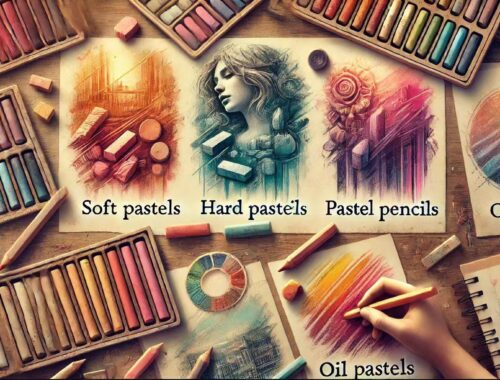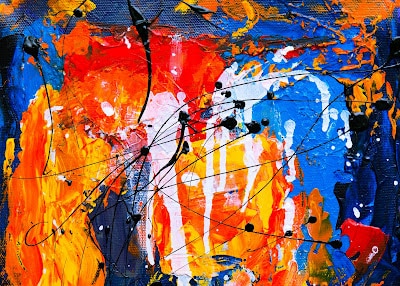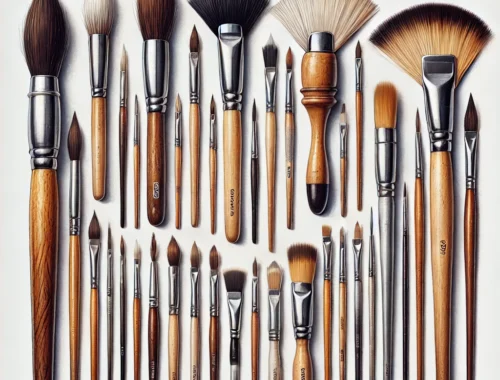
Choosing the Right Watercolour Paint for Beginners: A Guide to Quality and Value
Watercolour painting can be an incredibly rewarding and therapeutic hobby, but for beginners, selecting the right paint can feel overwhelming. With so many options available, it’s important to find watercolour paints that offer both quality and reasonable pricing. In this guide, I’ll walk you through the key factors to consider when choosing the best watercolour paints for your artistic journey.
1. Understand the Types of Watercolour Paints
Watercolour paints generally come in two forms: tubes and pans. Each has its own advantages:
- Tube Watercolours: These are often preferred by artists who use a lot of paint or need a more vibrant, fluid consistency. Tube watercolours allow for more freedom in mixing large quantities of paint, which is perfect for creating washes or larger works.
- Pan Watercolours: These are solid blocks of paint that are activated with water. They are great for beginners as they are easy to carry, take up less space, and are often more affordable. They also allow you to build up layers slowly, which is great for experimenting with different techniques.
2. Student vs. Artist Quality Paints
When starting out, it’s tempting to go for the most affordable option, but you’ll want to balance cost with quality. Watercolour paints typically come in two main grades:
- Student Grade Watercolours: These are formulated with more fillers and fewer pigments, making them more affordable. While they are not as intense in colour as artist-grade paints, they are still a good choice for beginners because they allow you to practice without the pressure of using high-end paints. Brands like Winsor & Newton Cotman or Schmincke Akademie offer excellent student-grade options.
- Artist Grade Watercolours: These paints use higher-quality pigments, which result in richer, more vibrant colours. They are more expensive but offer superior lightfastness and colour intensity. If you are serious about watercolour painting or plan to create artworks that will last, investing in artist-grade paints like Winsor & Newton Professional or Schmincke Horadam may be worth it.
3. Consider Pigment Load
When it comes to watercolour paints, pigment load refers to the amount of pigment in the paint. A higher pigment load means more intense colours and greater lightfastness. While student-grade paints generally have a lower pigment load, they are still great for practice. Look for information about the pigment load on the paint packaging or manufacturer’s website.
4. Colour Range
Beginners often find it helpful to buy sets that include a variety of colours. Many brands offer starter sets with a selection of basic colours, which is perfect for learning how to mix and create a broader range of hues. If you’re just starting out, a set with primary colours—red, yellow, and blue—along with a few earth tones (like burnt sienna and ultramarine blue) will be enough to create a wide range of shades. As you progress, you can expand your palette with additional pigments.
5. Price vs. Performance
While it’s tempting to choose the least expensive option, remember that your choice of paint can impact your overall painting experience. Low-cost paints might not give you the same depth of colour or ability to mix smoothly. However, that doesn’t mean you need to break the bank on the best artist-quality paints just yet. As a beginner, opt for mid-range options that offer good quality without the premium price tag. Brands like Daniel Smith or Schmincke Horadam have professional-grade options that are reasonably priced for beginners and still deliver excellent results.
6. Brands to Consider
Here are some watercolour paint brands that are well-regarded for their value and quality:
- Winsor & Newton Cotman: A widely available and affordable student-grade option that still provides rich, vibrant colours.
- Schmincke Akademie: A great student-grade option offering good quality and a smooth painting experience.
- Schmincke Horadam: This artist-grade range offers exceptional pigment load and vibrant colours at a reasonable price.
- Daniel Smith: Known for its extensive range of high-quality artist-grade paints, perfect for those looking to invest in professional materials.
- Pebeo: Offers affordable options with decent performance, making it a great choice for beginners.
7. Other Considerations
- Lightfastness: This is the ability of the paint to resist fading when exposed to light. As a beginner, it’s not crucial, but if you plan to keep your artwork for a long time, look for paints that are labeled as “lightfast.”
- Transparency: Watercolours are known for their transparent nature, but some paints may have more opacity. Experimenting with different levels of transparency can give you different effects.
- Price per Pan/Tube: If you’re on a budget, consider the price per pan or tube. Sometimes a larger tube offers better value than multiple small pans.
8. Why Choose the Best Paint Within Your Budget
Selecting the best watercolour paint within your budget is a wise decision. Higher-quality paints often have a better pigment load, superior blending ability, and enhanced lightfastness. While student-grade paints are perfect for practice, investing in artist-grade paints as your skills improve can significantly elevate your work. Quality paints allow you to focus on technique and creativity without being hindered by limitations in the materials.
Conclusion
Choosing watercolour paints as a beginner doesn’t have to be complicated. Start with a student-grade set, find a good balance between quality and price, and focus on building your colour mixing skills. Over time, as you become more familiar with the medium, you can gradually upgrade to artist-grade paints and expand your colour palette. Remember, the best watercolour paint is the one that helps you express your creativity and enjoy the process!
Happy painting!
You May Also Like

Understanding Pastels: Types, Characteristics, and Applications
07/03/2025
Comparing Popular Acrylic Paint Brands
18/12/2023

